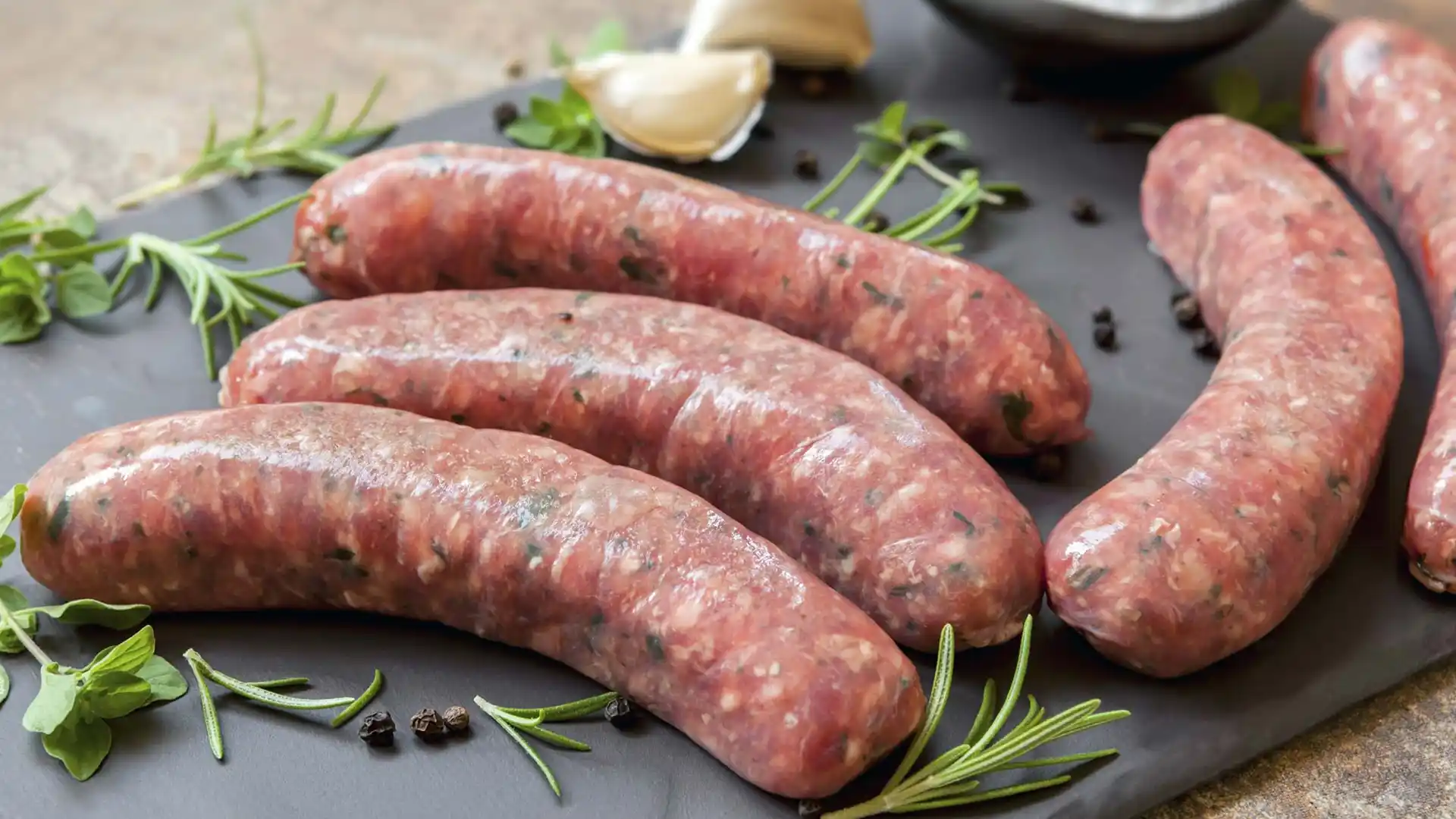One of Lincolnshire’s most famous exports is also one of its tastiest – the Lincolnshire sausage!
These delicious sausages aren’t only popular in our home county, but also across the nation. Food lovers can’t get enough of their chunky texture and mouth-watering flavours.
In this recipe guide, we’ll show you how to make them, the equipment you’ll need, and share some cooking tips and hacks.
Equipment You’ll Need
First, let’s talk about the equipment you’ll need:
- A meat grinder/sausage maker – chopping the meat won’t do, you need to grind it. If you have a stand mixer, you might be able to get a meat grinder/sausage stuffer attachment for it. Amazon sells a range of them.
If not, you can buy meat grinders that also stuff sausages. Again, Amazon sells a range of them at different price points. We use this Kenwood model which comes with a sausage stuffer attachment.
- Weighing scales – we prefer digital scales as they’re the most accurate.
- A sharp knife – chunking up the pork
- A large mixing bowl – we prefer stainless steel, but any will do.
- Your hands – Mixing by hand is the way to go for this recipe!
Ingredients For Lincolnshire Sausage
This recipe will make around 20 sausages, depending on the size.
For the Seasoning
- 50g Salt
- 5g white pepper
- 5g black pepper
- 15g rubbed dried sage
Or you can buy pre-made Lincoln Sausage seasoning here.
For the Sausage Meat
- 1kg pork shoulder
- 500g pork belly
- 225g bread crumbs
- 225g cold water
- Sausage casings (available here on Amazon if you can find them locally)
How to Make Lincoln Sausages
Lincolnshire sausages are best in the traditional way, by stuffing the meat into sausage casings. That said, you need a sausage stuffer to do this.
But don’t let not having a sausage stuffer put you off. You can also make Lincolnshire Sausage patties which is both quicker and easier.
- Step 1: Cut the pork shoulder (1kg) and pork belly (500g) into chunks.
- Step 2: Grind the meat. Traditional Lincolnshire Sausages use coarsely ground pork but if you prefer a finer grind, we won’t judge!
- Step 3: Add the pork to a large mixing bowl and mix in the salt (50g), white pepper (5g), black pepper (5g), and dried sage (15g).
- Step 4: Next, add the bread crumbs (225g) and mix well.
- Step 5: Now add the cold water (225g) and mix vigorously for 3-5 minutes. It’s best to get in with your hands and scrunch the mixture through your fingers. The sausage meat will start to come together. If the mixture is wet or loose, let it stand for a few minutes. The breadcrumbs will soak the moisture. Then give it another good mix.
- Step 6: If you don’t have a sausage stuffer, shape your sausage meat mix into individual patties.
If you have a sausage stuffer, fill your casings with the sausage meat. This can be a fiddly process and does take a bit of practice.
- Step 7: Put your sausages in the fridge for at least 6 hours (24 hours is best). This will allow the flavours to develop.
- Step 8: Cook your sausages in your preferred way. The traditional way is to slowly cook them in the oven. But you also can grill or fry them.
What Makes Lincolnshire Sausages So Special?
Two things set Lincolnshire Sausages apart: flavour and texture.
Flavour
The distinct taste of Lincolnshire Sausage comes from the sage. Historically, Lincolnshire has always had plenty of sage because the county’s dry conditions are perfect for growing it. Sage has been used to preserve meat since Roman times—so your sausage is not just delicious, it’s a little slice of history!
Texture
Lincolnshire Sausages use coarsely ground pork, unlike many other sausages that use minced pork. For the best results, the grinding holes in your meat grinder should be no smaller than 4.5mm. This gives the sausage its chunky texture, which holds up beautifully when cooked slowly in the oven.
Tips for Making Lincolnshire Sausages at Home
- Use soft breadcrumbs: Easily made in a food processor, soft crumbs give your sausages the right consistency.
- Keep the grinder holes large: Make sure your grinder is set to a larger size to maintain that classic Lincolnshire sausage texture.
- Ask your butcher to grind the meat – If you don’t want the expense of buying a meat grinder, ask your butcher to do it.
- Make sausage patties – if you don’t have a sausage stuffer, you can shape the meat into patties.
- Stuffing the casings: As you fill the casings, you can stuff several at once. Twist between each sausage to create links, and don’t worry—you’ll cut them later.
- Marinate overnight: Leave the sausages in the fridge overnight before cooking for the best flavor.
Best Dishes to Make with Lincolnshire Sausages
Now that you’ve made your sausages, it’s time to enjoy them! Here are some traditional English meals to try:
- Bangers and Mash: A classic!
- Toad in the Hole: Sausages in Yorkshire pudding batter—comfort food at its finest.
- Sausage Rolls: Perfect for a snack or party.
- Full English Fry-up: A hearty breakfast.
- Sausage Casserole: A warming dish for cooler days.








